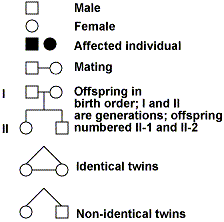1
Question
a. Discuss briefly various paleontological evidences in favour of Evolution.
b. What is pedigree analysis? Give two significance of pedigree analysis.
b. What is pedigree analysis? Give two significance of pedigree analysis.
Open in App
Solution
a. Many
important evidences are present in our nature which shows that evolution has
indeed taken place on earth. When an organism dies, its body decomposes and
hence lost in environment. But when any body part or complete body gets
preserved in the rocks or any other form, it becomes a fossil. Hence, fossils
are the preserved remains of hard parts of the organisms (plants, animals,
etc.) like bones, teeth, shells, wood, etc. in the rocks. By studying the
fossils in different sedimentary layers of earth’s crust, we can estimate the
geological period in which they existed. The study also showed that life-forms
varied over time and certain life forms are restricted to certain geological
life-spans. Hence, new forms of life have arisen at different times in the
history of earth. All this is called paleontological evidence.For example,
Dinosaurs got extinct from earth and their skeletons are being found from
different areas of earth. Even some present day organisms resemble the extinct
dinosaurs in structure which indicates that these modern organisms have evolved
from dinosaurs.Archaeopteryx is the most ancient bird in the fossil record and
is believed to be the ancestor of present day modern birds. The living modern
day counterpart organisms can be seen sharing similarities as they evolved from
the same line.b. Pedigree
analysis is a family tree or pedigree drawn up using certain standard symbols.
It is analysis of inheritance of traits in several of generations of a family.
It is a method of study of human genetic disorders. In the pedigree analysis, the
inheritance of a particular trait is represented in the family tree over generations.Following are the two significance of Pedigree analysis:- It is useful for the
genetic counselors to advice intending couples about the possibility of having
children with genetic defects like haemophilia, colour blindness,
phenylketonuria, sickle cell anaemia, myotonic dystrophy and polydactyly.
- By
pedigree analysis one can easily understand whether the trait is autosomal
dominant or recessive.


For example,
Dinosaurs got extinct from earth and their skeletons are being found from
different areas of earth. Even some present day organisms resemble the extinct
dinosaurs in structure which indicates that these modern organisms have evolved
from dinosaurs.
Archaeopteryx is the most ancient bird in the fossil record and
is believed to be the ancestor of present day modern birds. The living modern
day counterpart organisms can be seen sharing similarities as they evolved from
the same line.
b. Pedigree
analysis is a family tree or pedigree drawn up using certain standard symbols.
It is analysis of inheritance of traits in several of generations of a family.
It is a method of study of human genetic disorders. In the pedigree analysis, the
inheritance of a particular trait is represented in the family tree over generations.
Following are the two significance of Pedigree analysis:
- It is useful for the genetic counselors to advice intending couples about the possibility of having children with genetic defects like haemophilia, colour blindness, phenylketonuria, sickle cell anaemia, myotonic dystrophy and polydactyly.
- By
pedigree analysis one can easily understand whether the trait is autosomal
dominant or recessive.


Suggest Corrections
0
View More
Join BYJU'S Learning Program
Join BYJU'S Learning Program
